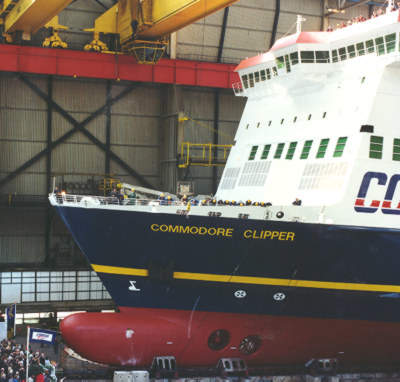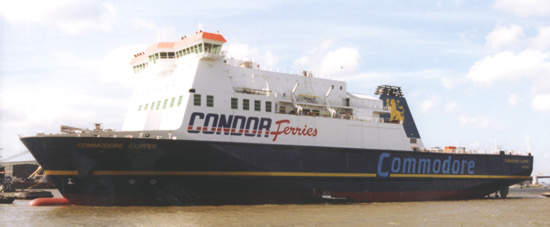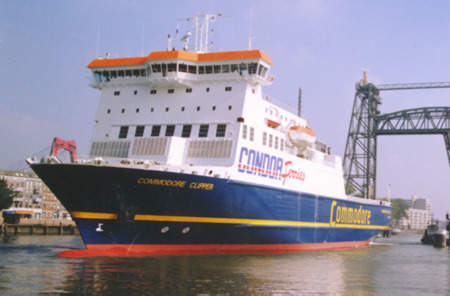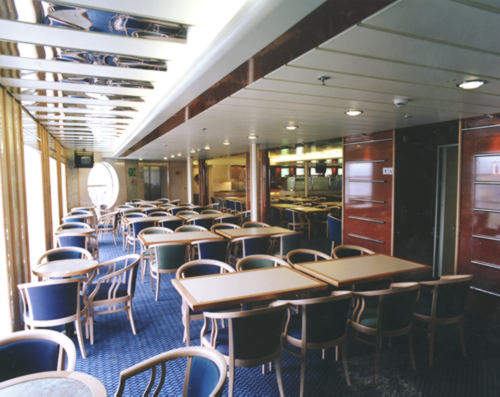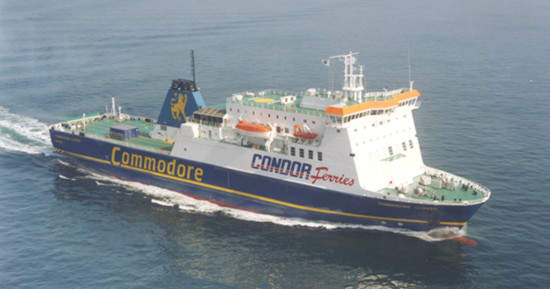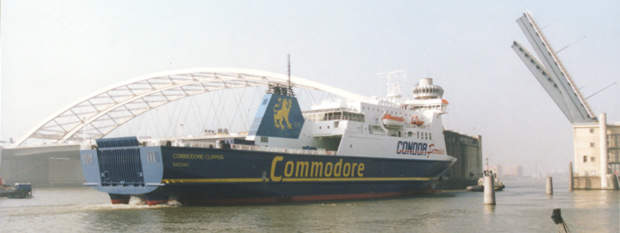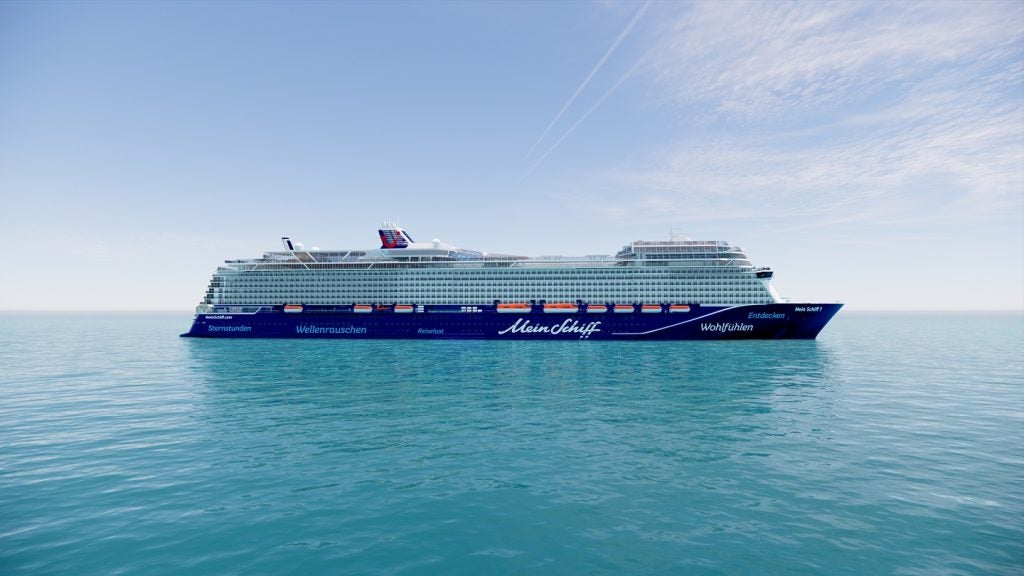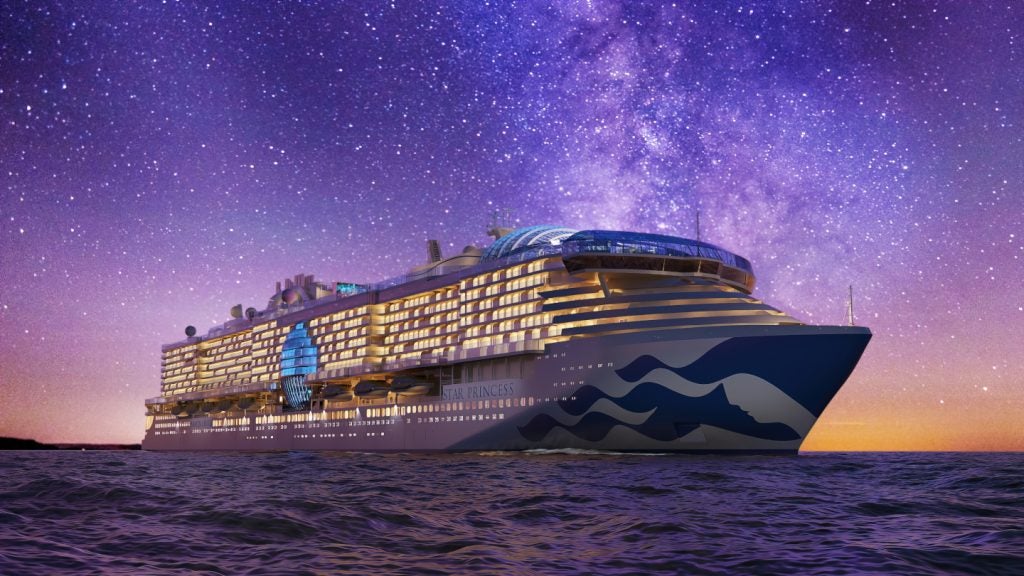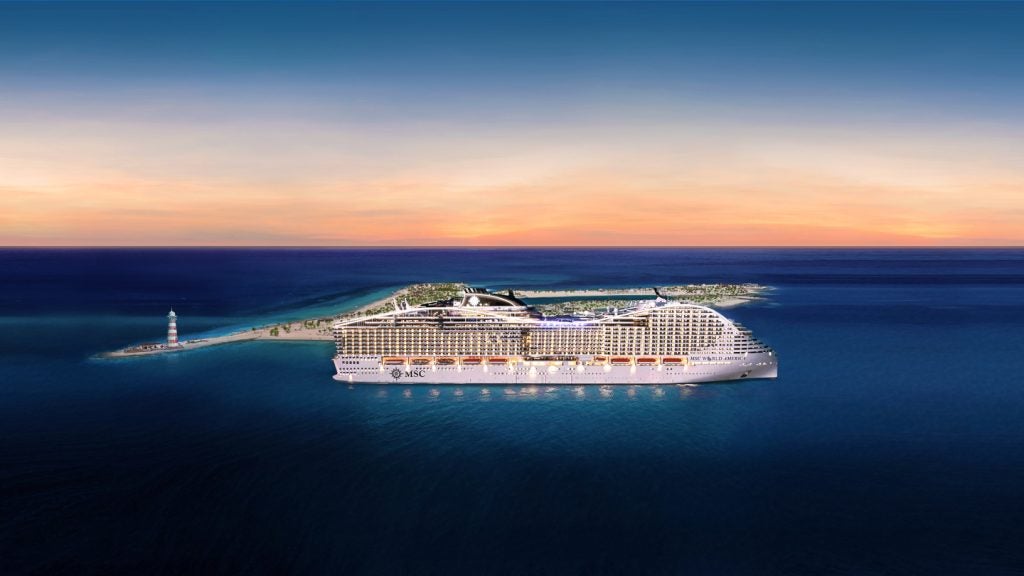Commodore Clipper provides a vital lifeline between the UK and the Channel Islands of Guernsey and Jersey. Owned by the Jersey-based Commodore Group, the vessel is designed to carry freight, as well as passengers. The company operates a number of ferries and high-speed craft between the UK, the Channel Islands and the northern coast of France. At US$48 million Commodore Clipper represents the largest single investment by the group and is seen as a measure of commitment to maintaining the crucial link between the islands and the mainland. Although she is the fifth vessel to carry this name plying the trade, she is the first vessel to be purpose-built for Island traffic since 1961.
British travellers to the Channel Islands have a choice between a conventional monohull ferry, which can take six to eight hours to complete the crossing, or the high-speed catamarans, which take only two and half hours. Although the latter have found favour with holidaymakers, local islanders prefer the more traditional method of transport, claiming it is cheaper and more reliable. The Channel Islands government granted an operating licence for the Commodore Clipper in 1998 on the understanding that, although she will run initially as a freight ferry, passenger accommodation will be available during the winter months. This is because weather conditions often do not allow for the service of two fast ferries on the route. These craft are operated by Condor Ferries, a subsidiary of Commodore Shipping. In past years when adverse weather conditions arise, a ferry such as the Havelot has been chartered to keep operations going. But on delivery of the Commodore Clipper there will be no need to charter in any vessels.
Condor Ferries currently operates two wave piercers, the Commodore Express and Commodore Vitesse, from Poole and Weymouth in southern England to the Channel Islands, and then on to St Malo in France.
DESIGN
The passenger, ro-ro cargo vessel was built at the Rotterdam-based van der Giessen de Noord shipyard in the Netherlands and the keel was laid in November 1998 – ready for launching in May 1999 and final delivery four months later. She is constructed to meet the classification standards of Det Norske Veritas and flies the flag of the Bahamas. The overall design is a continuation of the yard’s blueprint, which has already seen ferries built for companies such as Norse Irish Ferries, Stena Line (UK) and Finaval. Her gross tonnage is registered as 13,456t and her principal dimensions are: length overall of 129.14m, moulded breadth of 23.40m, depth of 8.60m and draught of 5.80m.
FACILITIES
Cargo capacity on the ship comprises a maximum of 92 truck/trailers combinations and 279 cars. Space is provided for 500 passengers, 160 of whom can be accommodated in 40 four-berth cabins. However, in normal operation, that is when the wave piercers are running, the vessel will be restricted to 300 passengers. There is also a self-service restaurant, lounge, panoramic bar, VIP lounge and duty-free shop. Crew accommodation is available for 37.
PROPULSION
Main engine power is provided through two MaK 9M32 diesel engines providing a total power output of 11,746bhp. This creates a service speed of around 19 knots – less than half the 40 knot service speed offered by the two Condor wavepiercers. For manoeuvring in the small harbours of St Peter’s Port, Guernsey and St Helier, Jersey she has two controllable pitch propellers fitted to port and starboard, and two fixed-pitch thrusters located in the bow.

